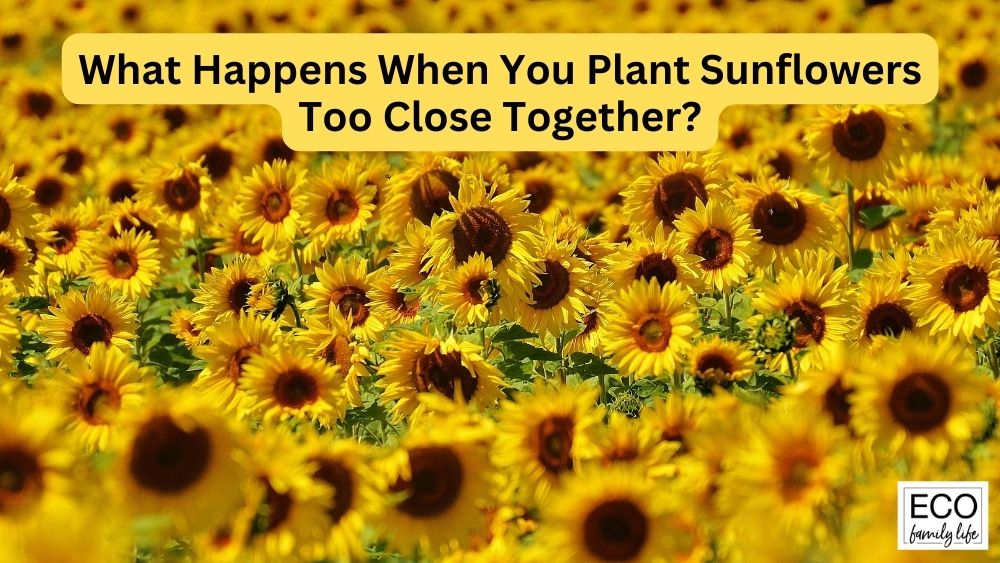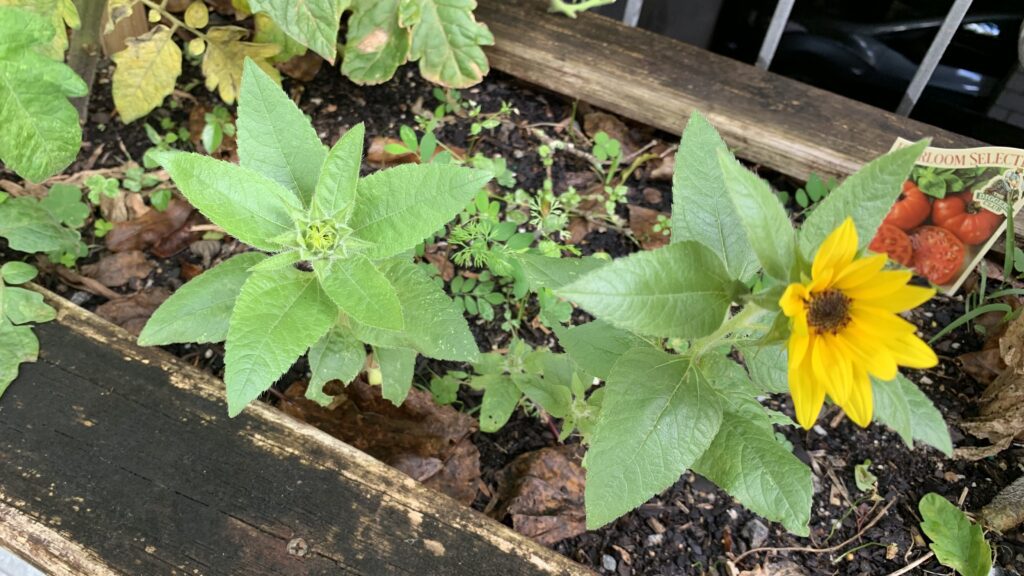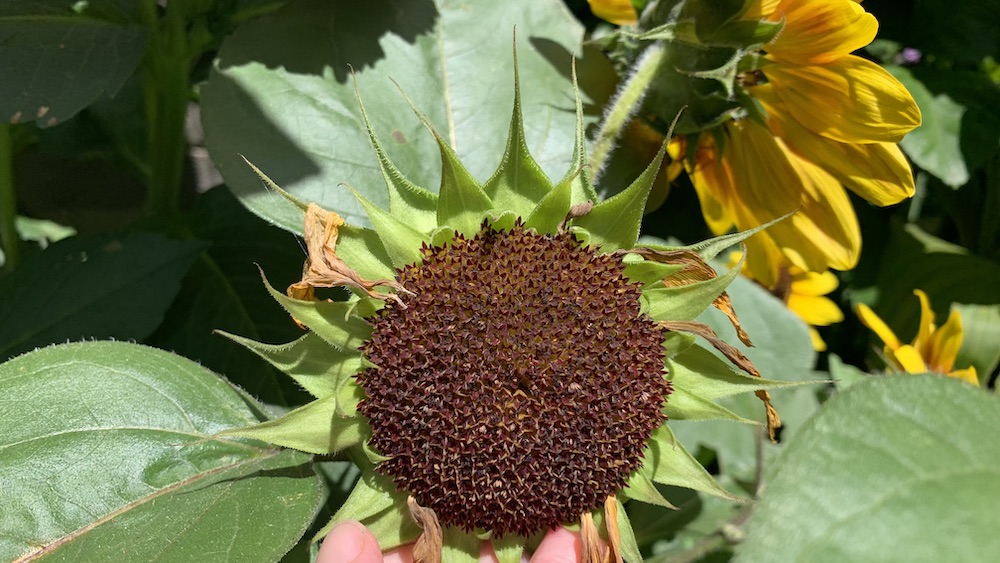If you’re planning on planting sunflowers, it’s important to understand the significance of proper spacing. Sunflowers are known for their tall, majestic blooms and are a popular choice for gardens and landscapes alike. However, planting sunflowers too close together can have negative consequences for both the plants and the garden as a whole.
When sunflowers are planted too close together, they can become overcrowded and compete for resources such as water, nutrients, and sunlight. This can lead to stunted growth, smaller blooms, and an overall weaker plant. Additionally, overcrowded sunflowers can be more susceptible to pests and diseases, which can spread more easily in a tightly packed garden.

Proper sunflower spacing is crucial for healthy, thriving plants and a beautiful garden. In this article, we will explore the importance of proper sunflower spacing, what happens if you plant sunflowers too close together, and how to avoid this common mistake. By the end of this article, you’ll have a better understanding of how to grow healthy, vibrant sunflowers in your own garden.
Key Takeaways
- Proper sunflower spacing is crucial for healthy, thriving plants and a beautiful garden.
- Overcrowded sunflowers can lead to stunted growth, smaller blooms, and an overall weaker plant, as well as increased susceptibility to pests and diseases.
- By understanding the importance of proper sunflower spacing and taking steps to avoid overcrowding, you can grow healthy, vibrant sunflowers in your own garden.
Why Spacing Sunflowers Apart is Important
When planting sunflowers, it is important to ensure that they are spaced appropriately. Proper spacing is crucial for the healthy growth and development of sunflowers, as overcrowding can have negative effects on their growth and yield.
Sunflower Growth Requirements
Sunflowers require adequate space to grow and develop properly. They are known for their tall, sturdy stems and large, vibrant flowers, which can range in size from a few inches to over a foot in diameter. To achieve this growth, sunflowers need plenty of sunlight, water, and nutrients from the soil.

When planting sunflowers, it is important to consider their ultimate size and spacing requirements. Most varieties of sunflowers need at least 6 inches of space between each plant, while larger varieties may require up to 3 feet of space. Sunflowers also require well-draining soil that is rich in organic matter, such as compost or aged manure.
Effects of Overcrowding
Overcrowding can have negative effects on the growth and yield of sunflowers. When sunflowers are planted too close together, they may compete for resources such as sunlight, water, and nutrients. This can lead to stunted growth, poor flower development, and reduced yield.
Overcrowded sunflowers may be more susceptible to pests and diseases. When plants are spaced too closely together, they may create a humid microclimate that is conducive to the growth of fungal diseases. Pests such as aphids and spider mites may also be attracted to overcrowded plants, as they provide a convenient food source.

To avoid these negative effects, it is important to space sunflowers appropriately when planting. This will allow each plant to receive the resources it needs to grow and develop properly, resulting in healthy, vibrant sunflowers with strong stems and large, beautiful flowers.
In conclusion, proper sunflower spacing is crucial for the healthy growth and development of sunflowers. By providing adequate space, sunlight, water, and nutrients, you can ensure that your sunflowers grow tall and strong, with vibrant flowers that add beauty and color to your garden.
What Happens if you Plant Sunflowers Too Close Together
When planting sunflowers, it’s important to give them enough space to grow and thrive. If you plant them too close together, several problems can arise.
1. Stunted Growth
Sunflowers planted too close together will compete for resources such as water, nutrients, and sunlight. This competition can lead to stunted growth, resulting in shorter plants with smaller flowers. The roots of sunflowers can also become entangled, further limiting their ability to absorb nutrients and water.

2. Increased Disease Risk
When sunflowers are planted too close together, they are more susceptible to diseases. Poor air circulation can lead to an increase in fungal diseases, such as powdery mildew. Pests, including aphids and mites, can also more easily move between plants if they are spaced so closely that they touch.
3. Reduced Flowering
Sunflowers planted too close together may produce fewer flowers or no flowers at all. When the plants are overcrowded, they may not have enough energy to produce the large, vibrant flowers that sunflowers are known for. Additionally, the flowers themselves may be smaller and less impressive than those produced by sunflowers that have been given enough room to grow.
To avoid these problems, make sure to give your sunflowers plenty of space when planting them. As a general rule of thumb, plant sunflowers about 2 feet apart. This will give them enough room to grow and ensure that they have access to the resources they need to thrive.

How to Keep Sunflowers the Right Distance Apart
Proper Planting Techniques
When planting sunflowers, it’s important to follow proper planting techniques to avoid overcrowding. Sunflowers should be planted with a spacing of 4-9 inches between each seed. This will allow each sunflower plant to have enough space to grow and develop properly.
To ensure proper spacing, you can use a measuring tool or a template to mark the distance between each seed. You can also use a planting grid to help you space out your sunflower seeds evenly.

Another important factor to consider when planting sunflowers is the depth of the seed. Sunflower seeds should be planted at a depth of 1-2 inches in well-draining soil. This will ensure that the seed has enough moisture and nutrients to germinate and grow.
Thinning Out Seedlings
If you’ve already planted your sunflowers too close together, it’s important to thin out the seedlings to prevent overcrowding. Overcrowding can lead to stunted growth, poor air circulation, and increased risk of disease and pests.
To thin out your sunflower seedlings, you can use scissors or gardening shears to cut the stems of the weaker seedlings at the soil level. Leave the strongest and healthiest sunflower seedlings to grow and develop.

It’s important to thin out your sunflower seedlings when they are still young and small. Waiting too long to thin out your seedlings can lead to damage to the roots of the remaining plants.
By following proper planting techniques and thinning out your sunflower seedlings, you can ensure that your sunflowers have enough space to grow and develop properly. This will result in healthier and more beautiful sunflowers for your garden.
Conclusion
In conclusion, planting sunflowers too close together can have negative effects on their growth and development. While sunflowers can still mature even if they are overcrowded, they may become stunted and short, or tall and spindly.
Overcrowding can also lead to poor air circulation, which can increase the risk of fungal diseases such as powdery mildew. Additionally, pests like aphids and mites can easily move between plants that are spaced too closely together.

To ensure healthy growth and optimal flower production, it is important to give sunflowers enough space to grow. Single stem sunflowers should be planted about 4-9 inches apart, while branching sunflowers should be spaced about 12-18 inches apart.
When planting sunflowers, consider the mature size of the variety you are planting and the space it will require. Proper spacing will help your sunflowers thrive and produce beautiful, healthy blooms.
Frequently Asked Questions
What is the recommended distance between sunflowers when planting?
The recommended distance between sunflowers when planting is about 12 inches apart. This spacing allows each sunflower to have enough space to grow and develop properly.
How does overcrowding affect sunflower growth?
Overcrowding can affect sunflower growth in several ways. When sunflowers are planted too close together, they have to compete for resources like water, nutrients, and sunlight. This competition can lead to stunted growth, smaller flowers, and a weaker stem.
Can planting sunflowers too close together stunt their growth?
Yes, planting sunflowers too close together can stunt their growth. When sunflowers are planted too close together, they have to compete for resources like water, nutrients, and sunlight. This competition can lead to stunted growth, smaller flowers, and a weaker stem.
What are the consequences of planting sunflowers too close together?
Planting sunflowers too close together can have several consequences. The sunflowers may grow stunted and smaller, have weaker stems, and produce smaller flowers. Additionally, overcrowding can make the sunflowers more susceptible to diseases and pests.
Is it possible for sunflowers to compete for resources when planted too close together?
Yes, sunflowers can compete for resources like water, nutrients, and sunlight when planted too close together. This competition can lead to stunted growth, smaller flowers, and a weaker stem.
Can planting sunflowers too close together cause them to wilt or die?
Planting sunflowers too close together can cause them to wilt or die. When sunflowers are planted too close together, they have to compete for resources like water, nutrients, and sunlight. If there isn’t enough of these resources to go around, some of the sunflowers may wilt or die.
I am an accredited practicing dietitian, experienced gardener and a dedicated cook. I love writing and sharing my experience so you can learn from my successes and mistakes.
